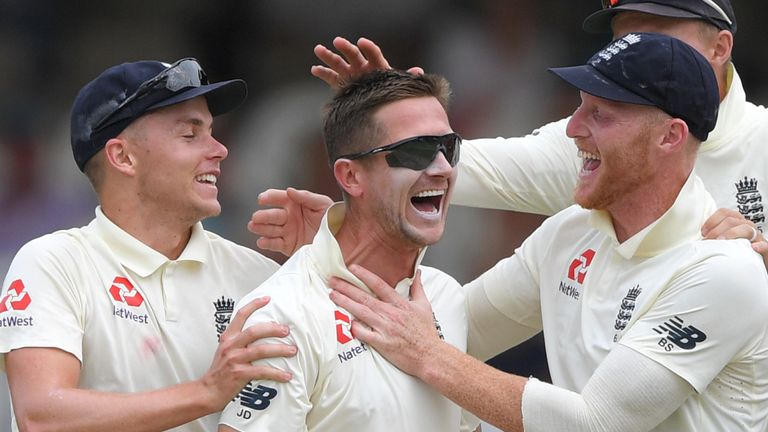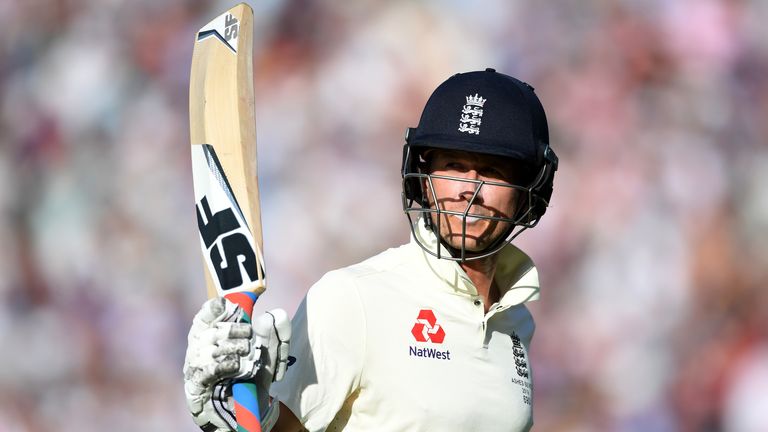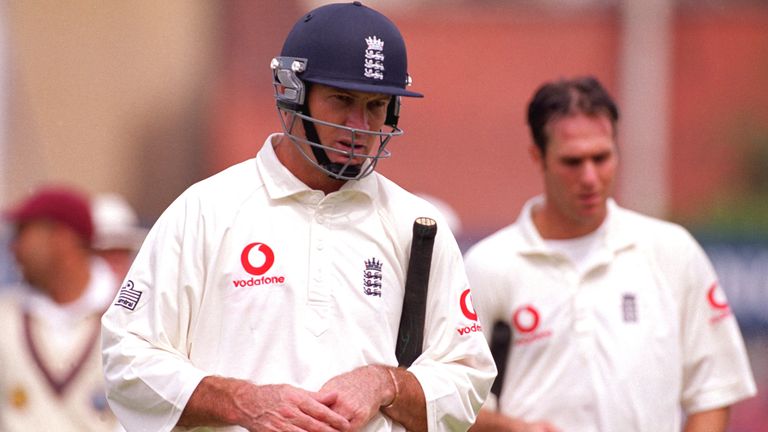As the dust settles on England’s first Test triumph at Cape Town in 63 years, it’s no surprise the spotlight has revolved around Ben Stokes, James Anderson and Dom Sibley.
Sibley’s maiden Test century, Anderson’s five-for and Stokes contributing heavily across… well, every single aspect of the game, were undoubtedly key factors in England’s series-levelling victory.
Yet one individual performance to drift under the radar during South Africa’s second innings was that of Joe Denly, who highlighted his growing importance to this England side – with the ball.
With South Africa’s batsmen threatening to become entrenched at the crease and frustrating the tourists, Denly’s leg-breaks became one of the most potent weapons at Joe Root’s disposal.
The Kent man succeeded in generating turn, particularly out of the rough outside a left-hander’s off stump – and it was no coincidence his two victims were Dean Elgar and Quinton de Kock.
Elgar may have insisted there was no contact between ball and bat, but the records will show he was caught behind off Denly to end an opening stand of 71 with Pieter Malan.
Then, with De Kock and Rassie van der Dussen thwarting England at the start of the final session – having taken up 34 overs in a partnership of 66 – it was the part-time spinner who made the breakthrough again.
He persuaded De Kock to pull a short ball into the hands of Zak Crawley at mid-wicket, exposing South Africa’s tail and opening the door for Stokes to apply the coup de grace.
Admittedly, Denly’s return of 2-42 from 18 overs does not make him the next Shane Warne – but it does show he can now be regarded, in the right conditions, as a serious bowling option in Test cricket.
Denly has developed as a limited-overs bowler in recent years – even opening the attack in the T20 international series against Sri Lanka last winter – but this is the third time Root has turned to him for a substantial Test match spell.
Interestingly, there have been relatively few murmurs about Denly’s modest Test record with the bat – specifically the fact that, after 12 caps, he is yet to post a century.
He averages a solid 31.30 but, despite registering six half-centuries – with a top score of 94 against Australia at The Oval – has yet to convert one of those into three figures.
For now, that may not matter if Denly can reinvent himself as a sound, albeit unspectacular top-three batsman who offers a more than useful slow-bowling option – arguably the role England’s selectors once envisaged for Moeen Ali.
There is an earlier precedent as well. Graeme Hick was widely viewed as England’s answer to Brian Lara or Sachin Tendulkar when he first qualified for Test cricket back in 1991.
It never quite worked out that way, with Hick finally making the first of six Test hundreds on his 14th England appearance and spending much of the following decade in and out of the side.
But Hick’s tidy off-spin added another string to his bow – he took four wickets against New Zealand in 1992 and shouldered the bulk of the bowling duty later that year at Kolkata, finishing with match figures of 5-28 against India.
Denly, who turns 34 a few days before the first of England’s two Tests against Sri Lanka in March, is a more experienced player than Hick was at that stage of his career.
Source: Read Full Article





